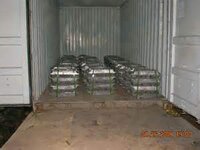Gold Supporter
Silver Supporter
Bronze Supporter
- Messages
- 1,232
- Reactions
- 1,066
EXACTLY!! YES, You will load for half the cost but you will shoot twice as much AND will have more ammunition in stock than u ever did before
Yes, but it starts innocently enough, and therein lies the danger!
A "kit" here, bottle of powder there... Next thing you know you've got 5 presses, are loading 7 calibers, and have enough supplies to...
Note: I have, appropriately, moved my continued harassment of Velzey to PM












